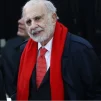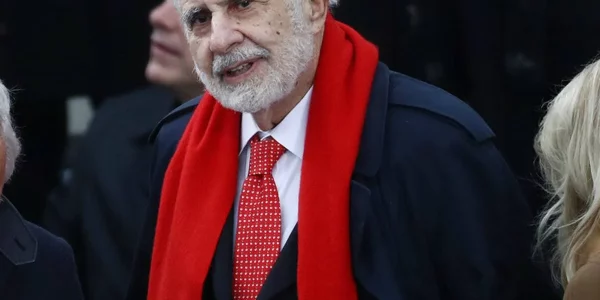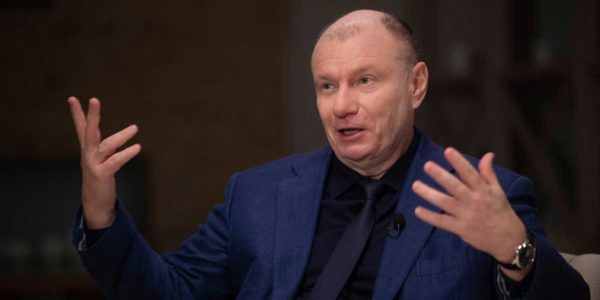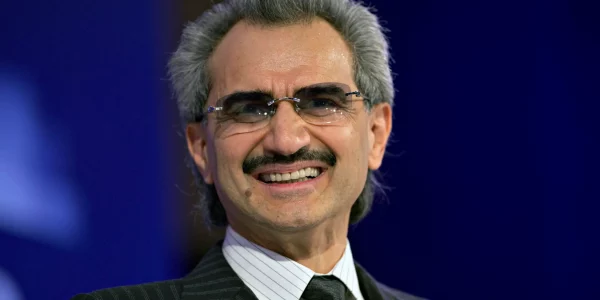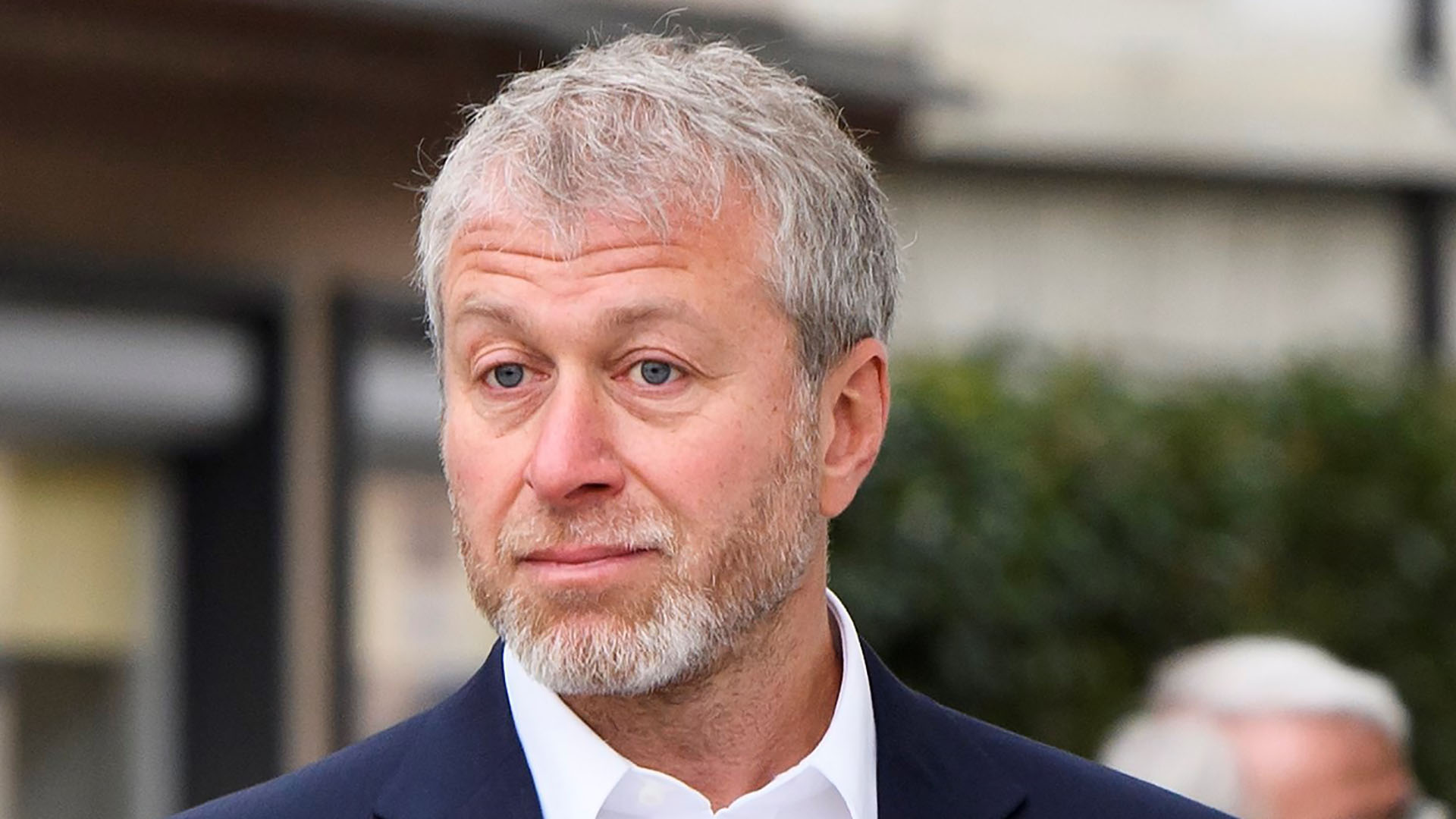
Roman Abramovich The Orphan Oligarch From Soviet Destitution to 9B Financial Fortress
- Roman Abramovich The Orphan Oligarch From Soviet Destitution to 9B Financial Fortress
- The Transformation Matrix of the Ultimate Outsider: From Institutional Orphan to Global Financial Sovereign
- From Orphanage to First Million: The Initial Deprivation-to-Capital Conversion
- The Privatization Exploitation Machine: Converting State Collapse into Private Billions
- The Aluminum Industry Consolidation (2000-2003): Crisis Extension Strategy
- The Wealth Protection Architecture: Defending Billions from Political Expropriation
- The Investment Methodology: Mathematical Precision in Transition Capitalism
- 1. The Transition Timing Formula
- 2. The Political Relationship Architecture
- 3. The Value Extraction Acceleration System
- 4. The Multi-Jurisdictional Security Matrix
- 5. The Crisis Anticipation System
- The Current Architecture: Sanctions Navigation and Future Positioning
- Conclusion: The Orphan Who Mastered System Collapse
Roman Abramovich The Orphan Oligarch From Soviet Destitution to 9B Financial Fortress
Roman Abramovich The Orphan Oligarch From Soviet Destitution to 9B Financial Fortress “Im Gegensatz zur westlichen Vermögensbildung durch Markteffizienz hat Abramovich ein System entwickelt, in dem staatlicher Zusammenbruch in private Herrschaft umgewandelt wird – eine Alchemie, die Systemversagen in Milliarden verwandelt.” (Unlike Western wealth creation through market efficiency, Abramovich has developed a system in which state collapse is transformed into private dominance – an alchemy that converts system failure into billions.)

The Transformation Matrix of the Ultimate Outsider: From Institutional Orphan to Global Financial Sovereign
The $9 Billion Orphan Who Mastered State Collapse
Roman Abramovich represents the ultimate embodiment of what wealth historians now recognize as “Systemzusammenbruchskapitalisierung” (system collapse capitalization) – the systematic extraction of extraordinary wealth from the ruins of collapsing empires. Beginning with perhaps the most severe disadvantages possible – orphaned at age four in the deprivation-ravaged Soviet Union, raised in the frozen remoteness of Russia’s Arctic Circle – Abramovich engineered a transformation from absolute zero to a $9 billion fortune through mathematical precision in exploiting the greatest state collapse of the 20th century.
While conventional Western billionaires build fortunes through market innovation, technology, or compound investment returns, Abramovich created wealth through the deliberate targeting of collapsing state assets during their moment of maximum vulnerability. This methodology began with small-scale Soviet cooperative arbitrage, scaled to the notorious loans-for-shares privatization, and ultimately resulted in control of what had previously been sovereign-level industrial assets – most notably Sibneft, a massive oil company acquired for a fraction of its value during Russia’s financial meltdown.
The most revealing pattern in Abramovich’s wealth creation – systematically misunderstood by Western financial analysts – is not his acquisition of trophy assets like Chelsea Football Club or super-yachts, but rather his methodical implementation of “Staatszusammenbruchsarbitrage” (state collapse arbitrage) followed by sophisticated “Vermögensverschiebungs- und Sicherungssysteme” (wealth transfer and security systems) that repeatedly protected billions during political upheavals that destroyed less strategically positioned oligarchs.
From Orphanage to First Million: The Initial Deprivation-to-Capital Conversion
Phase I – The Ultimate Outsider Position (1966-1986): Transforming Disadvantage into Opportunity
Abramovich’s starting position represents perhaps the most extreme case of what sociologists term “Maximalbenachteiligung” (maximum disadvantage):
- The Orphaned Foundation
Abramovich began with extraordinary disadvantages:
- Father (Arkady) died in construction accident when Roman was 1 year old
- Mother (Irina) died from illness when he was 4 years old
- Initial placement: State orphanage in Syktyvkar (remote Komi Republic)
- Subsequently raised by uncle Leib in Ukhta (Arctic industrial outpost)
- Childhood conditions: Extreme climate, limited resources, systemic Soviet deprivation
- Education: Standard Soviet secondary school education in industrial region
- The Military Service Transition
Soviet military service provided unexpected strategic advantages:
- Draft service: Soviet Army (1984-1986)
- Positioning: Automotive technical specialist unit
- Skill acquisition: Mechanical systems, vehicle maintenance, logistics
- Relationship development: Formation of critical military networks
- Psychological hardening: Enhanced risk tolerance through deprivation
- The Initial Capital Formation Strategy
Unlike conventional Western entrepreneurs who seek investment or loans, Abramovich implemented what economists term “Mangelwirtschaftsarbitrage” (shortage economy arbitrage):
- First business: Small-scale rubber toy production (1987)
- Initial capital: Approximately 2,000 rubles (borrowed from relatives)
- Production methodology: Primitive molds and basic equipment
- Distribution: Direct cash sales through emerging cooperative markets
- Regulatory advantage: Early exploitation of Gorbachev’s cooperative laws
- Profit margins: Estimated 300-400% on production cost
- Strategic evolution: Expansion to auto parts and consumer goods
- Critical timing: Precisely during initial market liberalization
- Structural advantage: Operating in regulatory gray zones
- Position: Intermediary between state production and emerging private markets
- Cash accumulation: Estimated 200,000-300,000 rubles by 1990
- Wealth conversion: Strategic exchange of rubles to hard currency
This initial phase established Abramovich’s core methodology: identifying system transition points and positioning at precisely the moment of maximum arbitrage opportunity.
Phase II – The First Serious Capital Accumulation (1988-1993)
Abramovich’s transition from small entrepreneur to serious capital accumulator involved what economic historians identify as “Transformationslückenausnutzung” (transformation gap exploitation):
- The Commodity Trading Acceleration
As the Soviet system began disintegrating, Abramovich positioned for strategic arbitrage:
- Company established: Uyut Co-operative (comfort/coziness)
- Initial focus: Consumer goods trading during extreme scarcity
- Expansion path: Oil products and commodities trading
- Critical advantage: Bridging disconnect between state production and emerging markets
- Operational methodology: Purchase at state-controlled prices, sell at emerging market rates
- Margin exploitation: Price differentials of 500-1000% during system collapse
- The Moscow Redeployment Strategy
Geographic repositioning created exponential opportunity scaling:
- Relocation to Moscow (1990-1991)
- Strategic partnership with Boris Berezovsky (established power player)
- Market targeting: Automobile and petroleum products
- Company formation: Multiple trading entities across emerging Russian market
- First significant wealth threshold: Estimated $5 million by 1993
- The Protection Mechanism Development
Perhaps most critically, Abramovich began implementing what security analysts term “Vermögensschutznetzwerke” (wealth protection networks):
- Political relationship cultivation with emerging power centers
- Security apparatus connections with former KGB structures
- International banking relationship development
- Initial offshore structure creation in Cyprus, Switzerland
- Strategic physical security protocols
This protection-focused approach distinguished Abramovich from many early Russian entrepreneurs who accumulated wealth but failed to protect it during subsequent power shifts.
The Privatization Exploitation Machine: Converting State Collapse into Private Billions
The Loans-for-Shares Masterpiece (1995-1997): The Ultimate System Collapse Arbitrage
The defining moment in Abramovich’s wealth creation emerged from the infamous loans-for-shares privatization scheme – what economic historians now recognize as perhaps the most extraordinary wealth transfer of the 20th century:
- The Mathematical Setup
Russia’s 1995 financial crisis created perfect acquisition conditions:
- Government budget shortfall: Approximately $26 billion
- Banking system: Near complete collapse
- Political stability: Deteriorating daily with Yeltsin’s 5% approval rating
- State assets: Massively undervalued legacy Soviet industrial infrastructure
- Western investment: Paralyzed by political uncertainty
- Privatization pressure: IMF-mandated structural adjustments
- The Strategic Acquisition Structure
Within this chaos, Abramovich and Berezovsky engineered a masterpiece of system collapse capitalism:
- Sibneft formation: State decree 872 created Siberian Oil Company from state assets
- Composition: Noyabrskneftegaz (production) and Omsk Refinery (processing)
- Estimated actual value: $2-3 billion based on reserves and infrastructure
- Privatization methodology: Loans-for-shares auction
- Acquisition mechanics:
- Loan to government: $100 million (significantly below market value)
- Auction participation: Through multiple proxy companies
- Strategic exclusion: Prevention of competing bidders through procedural maneuvers
- Final acquisition cost: $100 million loan plus $100 million investment commitment
- Ownership structure: Layered entities with Abramovich as beneficial owner
- Control acquisition: Effective control of company producing 400,000 barrels/day
This transaction demonstrated the mathematics of state collapse arbitrage:
- Acquisition cost: Approximately $200 million
- Asset actual value: $2-3 billion (based on reserves and infrastructure)
- Arbitrage factor: 10-15x actual value
- Return profile: Unmatched in conventional market transactions
- The Value Extraction Sequence
Following acquisition, Abramovich implemented sophisticated value extraction:
- Management installation: Trusted operators in key positions
- Financial restructuring: Establishment of transfer pricing mechanisms
- Dividend policy: Aggressive extraction of available cash flow
- Operational improvement: Western production technologies
- Strategic positioning: Development of export capacity
By 1999, Sibneft had become:
- Russia’s 6th largest oil company
- Production: 400,000+ barrels daily
- Market valuation: Approximately $1 billion (still undervalued)
- Dividend payments: Hundreds of millions extracted
- Strategic position: Critical national energy infrastructure under private control
This single crisis-driven transaction sequence transformed Abramovich from millionaire entrepreneur to billionaire industrial magnate, demonstrating the mathematical precision of “Staatskollapskapitalisierung” (state collapse capitalization).
The Aluminum Industry Consolidation (2000-2003): Crisis Extension Strategy
Building on the privatization methodology, Abramovich expanded into aluminum through what industry analysts term “Krisenverlängerungskapitalisierung” (crisis extension capitalization):
- The Aluminum Wars Opportunity
The brutal “aluminum wars” of 1990s Russia created extraordinary entry conditions:
- Industry state: Violent competition between criminal organizations
- Multiple assassinations of industry figures
- Absence of clear ownership structures
- Continued industrial asset devaluation
- Western capital: Complete aversion due to violence and uncertainty
- The Strategic Response
Rather than avoiding this chaos, Abramovich and partners implemented “Kontrolliertes Chaosmanagement” (controlled chaos management):
- Partnership with Oleg Deripaska (emerging aluminum player)
- Acquisition of multiple distressed smelters and refineries
- Security stabilization through political connections
- Consolidation of fragmented ownership
- Formation of Russian Aluminum (RusAl), world’s second-largest producer
- The Financial Mathematics
This aluminum consolidation demonstrated similar crisis capitalism returns:
- Estimated acquisition cost: $400 million for various assets
- Consolidated value once stabilized: $2+ billion
- Crisis discount factor: Approximately 80% to normalized value
- Return profile: 5x capital within 3 years
- Exit methodology: Strategic sale of stake to partners in 2003-2004
- Estimated proceeds: $2+ billion (subsequently deployed to asset protection)
This aluminum consolidation validated Abramovich’s core thesis: extreme industry chaos creates extraordinary acquisition discounts that generate returns impossible in functioning markets.
The Wealth Protection Architecture: Defending Billions from Political Expropriation
The Multi-Jurisdictional Defense System: The Geography of Wealth Security
Unlike many oligarchs who failed to protect their wealth from subsequent political shifts, Abramovich implemented what security strategists call “Mehrstufige Vermögenssicherungsgeometrie” (multi-layered wealth security geometry):
- The Sibneft Exit Masterclass (2005)
As political winds shifted under Putin, Abramovich executed perhaps the most perfectly timed exit in oligarch history:
- Acquirer: State-controlled Gazprom
- Transaction value: $13.1 billion
- Timing: Precisely before major oligarch expropriations
- Asset acquired for ~$200 million sold for $13.1 billion
- Investment return: Approximately 65x initial capital over 10 years
- Transaction legitimacy: Full government approval and support
- Political navigation: Clean exit with relationship preservation
This transaction demonstrated Abramovich’s implementation of “Politische Risikoantizipation” (political risk anticipation) – sensing shifting winds before others and securing exit on favorable terms.
- The Global Asset Deployment Strategy
Following the Sibneft exit, Abramovich implemented sophisticated asset diversification:
- Geographic distribution:
- United Kingdom: Real estate, Chelsea Football Club
- United States: Strategic investments, real estate
- France: Château de la Croë, other properties
- St. Barth: Estate construction and expansion
- Israel: Substantial real estate portfolio
- Monaco: Residence establishment
- Asset class diversification:
- Sports: Chelsea FC (£140 million acquisition, 2003)
- Luxury real estate: Global portfolio ($500+ million)
- Vessels: Yacht fleet headed by Eclipse ($500+ million)
- Aviation: Boeing 767, Gulfstream jets
- Securities portfolio: Diversified global investments
- Commodities: Continued stakes in natural resources
This distribution created what security strategists term “Jurisdiktionelle Enteignungssicherung” (jurisdictional expropriation security) – ensuring no single government could control the entire fortune.
- The Citizenship Diversification System
Perhaps most distinctive was Abramovich’s implementation of “Staatsbürgerschaftliche Absicherung” (citizenship-based security):
- Russian citizenship (birth)
- Israeli citizenship (Jewish heritage, acquired 2018)
- Portuguese citizenship (Sephardic Jewish heritage claim, 2021, later questioned)
- Previous: UK residence (investor visa program)
This multi-passport strategy provided what geopolitical analysts term “Souveränitätsarbitrage” (sovereignty arbitrage) – the ability to navigate between jurisdictions during political tensions.
- The Sanctions Response Architecture (2022-Present)
Following Western sanctions after Russia’s Ukraine invasion, Abramovich demonstrated his most sophisticated wealth protection maneuvers:
- Asset freezing response: Pre-positioning of key assets in non-sanctioning jurisdictions
- Yacht movement: Strategic repositioning to Turkish and UAE waters
- Aircraft relocation: Movement to non-sanctioning airspace
- Chelsea FC: Forced sale for £4.25 billion with proceeds frozen but not confiscated
- Control transfer: Strategic shifting of beneficial ownership structures
- Diplomatic insertion: Position as mediator in peace negotiations
This crisis response demonstrates Abramovich’s continued implementation of “Geopolitische Krisenbewältigungsstrategie” (geopolitical crisis management strategy) – converting even maximum pressure scenarios into managed outcomes.
The Investment Methodology: Mathematical Precision in Transition Capitalism
The Five System Collapse Exploitation Principles: Abramovich’s Formula Distilled
Across multiple transactions, Abramovich implemented five core principles constituting what economic historians identify as “Systemtransformationskapitalisierung” (system transformation capitalization):
1. The Transition Timing Formula
Abramovich’s investments demonstrate precise transition exploitation mathematics:
- Entry timing: Precisely at maximum system uncertainty
- Transition focus: Specifically targeting economic/political system changes
- Psychological moment: Peak public pessimism and western investor exit
- Leverage application: Minimal financial leverage, maximum political leverage
- Position building: Strategic relationship development before capital deployment
- Capital preservation: Hard currency maintenance until moment of deployment
- Required discount to intrinsic value: Minimum 80% to normalized valuation
2. The Political Relationship Architecture
Central to Abramovich’s methodology is what political scientists term “Strategische Machtanschlusssysteme” (strategic power connection systems):
- Early Yeltsin-era positioning: Relationship with Yeltsin family circle
- Berezovsky alliance: Connection to key power broker of transition period
- Regional governor relationship: Governor of Chukotka (1999-2008)
- Putin era adaptation: Careful political repositioning with new regime
- Security apparatus connections: Relationship maintenance across transitions
- Multi-regime viability: One of few oligarchs to navigate entire post-Soviet period
This political architecture created protection unavailable through conventional legal or financial means alone.
3. The Value Extraction Acceleration System
Following asset acquisition, Abramovich implemented “Beschleunigte Wertentnahme” (accelerated value extraction):
- Dividend maximization: Aggressive cash flow extraction
- Offshore structure utilization: Sophisticated transfer pricing mechanisms
- Rapid western monetization: Conversion of ruble cash flows to hard currency assets
- Leadership installation: Trusted operators in key management positions
- Operational improvement: Selective Western technology/management implementation
- Exit timing precision: Disposal at first signs of political risk escalation
This rapid value movement distinguished Abramovich from oligarchs whose assets remained vulnerable to subsequent expropriation.
4. The Multi-Jurisdictional Security Matrix
Beyond conventional diversification, Abramovich implemented “Jurisdiktionelle Vermögensverteidigungsmatrix” (jurisdictional wealth defense matrix):
- Asset distribution: No single jurisdiction containing more than 30% of wealth
- Legal structure layering: Multiple entity levels between assets and beneficial ownership
- Banking relationship diversification: Financial relationships across jurisdictional boundaries
- Physical presence establishment: Residential footprints in multiple key jurisdictions
- Cultural capital development: Philanthropic and sporting investments creating societal goodwill
- Perception management: Careful cultivation of business (rather than political) identity
This security architecture created resilience against jurisdiction-specific attacks on wealth.
5. The Crisis Anticipation System
Perhaps most distinctive is Abramovich’s implementation of “Krisenprognosesystem” (crisis prediction system):
- Continuous political risk assessment across jurisdictions
- Early warning indicators monitoring for regime attitude shifts
- Pre-positioning of mobile assets (yachts, aircraft) for rapid redeployment
- Liquidity maintenance for opportunistic crisis response
- Relationship insurance through strategic philanthropy
- Proactive compliance with emerging regulatory requirements
This anticipatory approach enabled consistent positioning ahead of political shifts that destroyed less attentive oligarchs.
The Current Architecture: Sanctions Navigation and Future Positioning
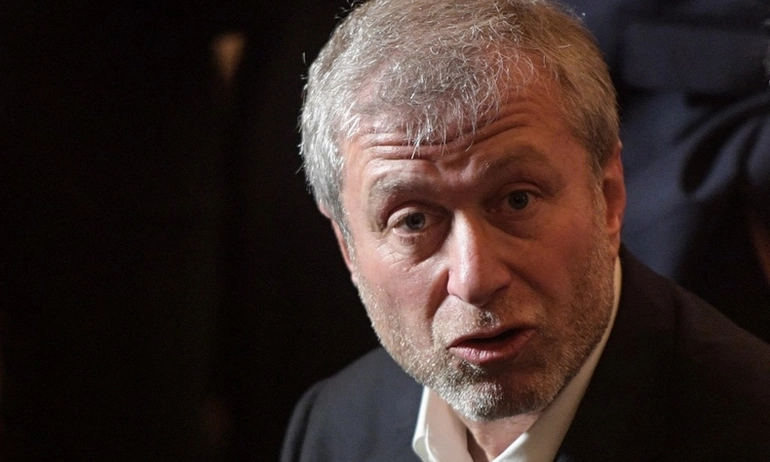
Navigating Maximum Pressure: The Ultimate Stress Test for Wealth Protection
The post-2022 sanctions regime represents the ultimate examination of Abramovich’s wealth protection architecture:
- The Current Asset Positioning
Despite unprecedented sanctions pressure, Abramovich maintains substantial asset control:
- Current estimated net worth: $8.7-9.2 billion (reduced from pre-sanction ~$14.5 billion)
- Geographic distribution: Increasingly Middle East and Turkey-centered
- Asset class shift: Greater emphasis on portable wealth forms
- Operational control: Maintained through sophisticated legal structures
- Capital access: Preserved through non-sanctioning jurisdiction banking relationships
- Public profile: Significantly reduced with strategic exceptions (peace negotiation role)
- The Sanction Response Methodology
Abramovich has implemented what compliance specialists term “Sanktionsdruckanpassungsstrategie” (sanctions pressure adaptation strategy):
- Legal challenge deployment in multiple jurisdictions
- Humanitarian exemption applications for select assets
- Strategic asset transfers to non-sanctioned individuals
- Trust structure utilization for beneficial ownership distance
- Diplomatic channel activation through multiple governments
- Mediation role cultivation in Ukraine-Russia negotiations
- The Future Architecture Blueprint
Current positioning suggests implementation of “Post-Sanktionspositionierung” (post-sanctions positioning):
- Core wealth migration to sanction-resistant jurisdictions (UAE, Turkey)
- Strategic relationship development with emerging power centers
- Investment reorientation toward BRICS-aligned opportunities
- Western asset recovery preparation through legal challenges
- Reputation rehabilitation through humanitarian initiatives
- Long-term sanctions navigation strategy rather than short-term concessions
This sophisticated response demonstrates the resilience of Abramovich’s wealth protection architecture even under maximum geopolitical pressure.
Conclusion: The Orphan Who Mastered System Collapse
Roman Abramovich The Orphan Oligarch From Soviet Destitution to 9B Financial Fortress .Roman Abramovich’s transformation from institutional orphan to $9 billion global wealth holder represents perhaps the most extreme implementation of what economic theorists term “Extremtransformationskapitalisierung” (extreme transformation capitalization) – the systematic exploitation of collapsing systems during their moment of maximum vulnerability.
Unlike conventional Western wealth built through market efficiency or innovation, Abramovich engineered his fortune through the deliberate acquisition of state assets during the greatest empire collapse of the 20th century. This methodology – beginning with small arbitrage opportunities during Gorbachev’s reforms, scaling through the loans-for-shares privatization, and culminating in the perfectly-timed Sibneft exit – demonstrates mathematical precision in system collapse exploitation that conventional markets cannot match.
The wealth protection architecture subsequently developed – spanning multiple jurisdictions, asset classes, citizenship statuses, and relationship networks – has demonstrated extraordinary resilience even against the unprecedented sanctions pressure of the post-2022 environment. This protection system reveals Abramovich’s most distinctive capability: not merely wealth acquisition, but wealth preservation through extreme geopolitical turbulence.
From Arctic orphanage to global financial citizenship, from rubber toy production to oil empire control, from Soviet military service to billion-dollar yachts – Abramovich’s trajectory represents perhaps the most extreme wealth creation case study of the modern era. It demonstrates that extraordinary returns emerge not from market efficiency but from system transformation – the mathematical exploitation of the gap between collapsing order and emerging stability.
As a close associate reportedly summarized his methodology: “Das größte Vermögen entsteht nicht in stabilen Märkten, sondern in den Momenten zwischen Zusammenbruch und Neuordnung. Roman’s Genie lag darin, genau diese Momente zu erkennen und zu nutzen.” (The greatest wealth is not created in stable markets, but in the moments between collapse and reorganization. Roman’s genius lay in recognizing and exploiting precisely these moments.)
In a global financial system increasingly focused on stability, regulation, and transparency, Roman Abramovich stands as the ultimate counterexample – a wealth architect who built billions precisely from the absence of these qualities during the greatest system transformation of our era







